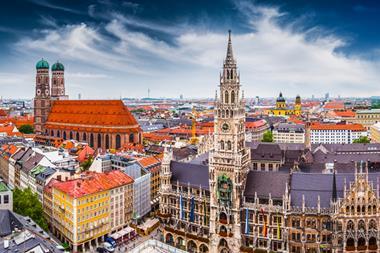Two surveys have shown the extent of German institutional investors’ demand for residential property investments.
An annual study by Universal-Investment suggests that the level of investment in housing is set to eclipse office investments for the first time – the two sectors had always been in “pole position” in previous surveys.
Alexander Tannenbaum, managing director real estate at Universal, said interest in residential property was “not new”, but the “extent of the portfolio restructuring”, including a reduction in office and retail investments, was “remarkable”.
The survey showed that the average residential real estate allocation among investors is set to increase from just under 19% to almost 38%. Last year, the latter figure was 21%.
Investors in a separate survey by Engel & Völkers already have a greater allocation to residential at 40% versus 28% for offices.
But over half of investors want to “increase their exposure to residential property further”, Engel & Völkers said, and 60% have already set a target investment volume of “up to €100m by 2018”.
Engel & Völkers said the “unbroken interest” in residential was “in spite of significantly lower initial yields” in the sector.
The survey also showed that the introduced rental freeze, or Miepreisbremse, introduced in some German cities has had little influence on institutions’ investment decisions.
A major effect on rental prices was not expected in most areas, because the price framework remains set by the market and not a legal cap.
The major interest in residential can also be seen in the significant number of transactions in recent weeks.
The Deutsche Investment KVG has successfully issued its second residential property Spezialfonds. Six institutional investors have committed €110m in capital bringing the total investment volume to just over €200m.
German property company has bought a portfolio with 1000 apartments in France via its subsidiary Patrizia France.
According to a recent Patrizia Immobilien report on European residential markets, the number of new constructions has increased again in around half of Europe in 2014. But in most countries it is still well below the level at the turn of the century.
Marcus Cieleback, group head of research at Patrizia Immobilien, said “seldom before have the European residential property markets been so heterogeneous regarding their current economic, structural and demographic settings.”







